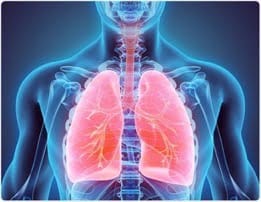A significant new three-year independent study on COPD and smoking has been released by the CoEHAR of the University of Catania (Italy), led by Professor Riccardo Polosa.
The Three-year ground-breaking scientific research study identifies long term health effects for Chronic Obstructive Pulmonary Disease patients (COPD) switching to heated tobacco.
“My clinical experience tells me that – quite surprisingly- most COPD smokers don’t have a good reason to quit” says Polosa “from the key study results that Heated Tobacco product (HTP’s) use decreased the number of acute exacerbations of COPD by more than 40% and caused clinically significant improvements, there is a clear indication that new combustion-free technologies can be a massive remedy for COPD and this is important for Physicians, patients and their caregivers”.
On the 4th March Publich Health England announced that despite reductions in smoking prevalence, smoking remains the biggest single cause of preventable death and disease, as well as a leading cause of health inequalities.
Significantly it is well known that cigarette smoking is a significant risk factor for COPD sufferers, causing over 3 million deaths and being the fourth leading cause off death globally. PHE announced alternative nicotine delivery devices that are less harmful could play a crucial role in reducing this health burden.
Key Highlights:
- The study demonstrates that long-term HTP use in COPD patients clinical outcomes such as exacerbation rate, exercise tolerance and quality-of-life measures.
- HTPs use decreased the number of acute exacerbations of COPD by more than 40% and caused clinically significant improvements in QoL and in the ability to exercise, whereas no changes were observed in COPD patients who continued smoking.
- COPD currently accounts for approximately six percent of all deaths, and by the year 2030 is predicted to become the number one killer amongst the 10 leading causes of death at the global level.
- Long-term HTP use by COPD patients appears unlikely to raise significant health concerns under normal use.
- Given the addictiveness of smoking, many smokers cannot or will not quit, and quit rates among COPD patients are extremely modest, even in tertiary hospitals. This shows the need for tobacco harm reduction, an alternative to the “quit or die” scenario.
The Study
Stopping smoking is the only known intervention that can improve COPD and save lives, but quitting is not easy. Substitution of combustible tobacco cigarettes for combustion-free nicotine delivery alternatives such as heated tobacco products (HTPs) may lead to improvements in COPD. The study evaluated health consequences of the use of HTP’s in COPD patients.
Why?
COPD patients who smoke are better off stopping smoking, but they struggle to completely stop nicotine use. An alternative approach for patients with COPD who are having difficulty at stopping smoking is that of substituting conventional cigarettes with combustion-free nicotine delivery alternatives such as heated tobacco products (HTP). But no data is available. This is the first study to evaluate objective and subjective measures of cardio- respiratory health in COPD patients who have been daily users of HTPs. Knowledge of the long-term health impacts of HTP use in this patient population is needed to inform COPD patients and their doctors.
COPD
Chronic Obstructive Pulmonary Disease (COPD) is the name for a group of lung conditions that cause breathing difficulties, which includes emphysema and chronic bronchitis. Acute exacerbations of COPD can be triggered by a range of factors including respiratory tract infections (most commonly rhinovirus), smoking, and environmental pollutants.
Individuals with COPD experience poor quality of life and die prematurely from cardio- respiratory complications. COPD kills over 3 million people each year.
Continued exposure to combustible chemicals in cigarette smoke is a significant risk factor for COPD.
What is Heated Tobacco?
Heated tobacco products are specially designed tobacco sticks. They are heated by electronic devices rather than set alight and burned as cigarettes are. Also referred to as Heat-Not-Burn, the temperature that a device reaches to heat the tobacco is significantly lower than the 600⁰C at which a cigarette burns. By controlling the temperature to prevent it from combusting, a vapour is released instead of smoke.
HTP’s emits on average 95% lower levels of harmful chemicals compared to cigarettes.
Heated tobacco products are tobacco stick’s that are heated by battery-powered devices. Like your smartphone, these devices need to be charged regularly.
Once charged, a stick of tobacco is inserted into the device. By pushing a button to begin the heating process, a user can then inhale the vapour that is released. Once the experience is over, the used tobacco stick can be removed from the device and disposed of in a bin. Heated tobacco products are not risk free.
Method of Study
Professor Ricardo Polosa monitored health parameters for 3-years in COPD patients who substantially attenuated or ceased cigarette consumption after switching to HTPs. Findings were compared to those obtained from an age-sex-matched cohort of COPD patients who continued to smoke. COPD patients regularly attending outpatient clinics in four Italian hospitals were included.
Changes in daily cigarette smoking, annualized disease exacerbations, lung function indices, patients reported outcomes (CAT scores) and 6-minute walk distance (6MWD) from baseline were measured in COPD patients using HTPs at 12, 24 and 36 months. These were compared to a group of age- and sex-matched COPD patients who continued smoking.
Results of Study
HTPs use decreased the number of acute exacerbations of COPD by more than 40% and caused clinically significant improvements in QoL and in the ability to exercise, whereas no changes were observed in COPD patients who continued smoking. HTPs were well tolerated.
Complete data sets were available for 38 patients (19 in each group). Subjects using HTPs had a substantial significant decrease in annualized COPD exacerbations within the group mean (±SD) from 2.1 (±0.9) at baseline to 1.4 (±0.8), 1.2 (±0.8) and 1.3 (±0.8) at 12-, 24- and 36-month follow-up (p<0.05 for all visits). In addition, substantial and clinically significant improvements in CAT scores and 6MWD were identified at all 3 time points in the HTP cohort. No significant changes were observed in COPD patients who continued smoking.
Conclusion of Study
Consistent improvements in respiratory symptoms, exercise tolerance, quality of life, and rate of disease exacerbations were observed in patients with COPD who abstained from smoking or substantially reduced their cigarette consumption by switching to HTP use.
This study is the first to describe the long-term health effects of HTP use in COPD patients. Consistent improvements in respiratory symptoms, exercise tolerance, quality of life, and rate of disease exacerbations were observed in patients with COPD who abstained from smoking or substantially reduced their cigarette consumption by switching to HTP use.
Link to the study: Health outcomes in COPD smokers using heated tobacco products: a 3‑year follow‑up




